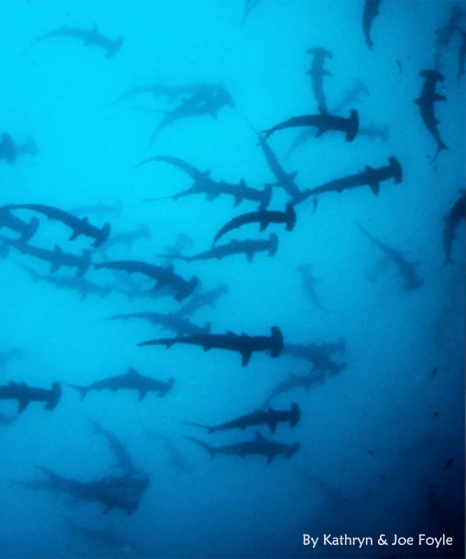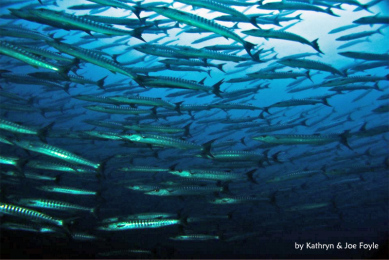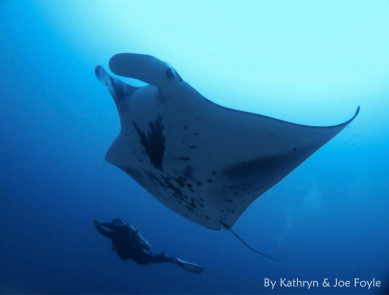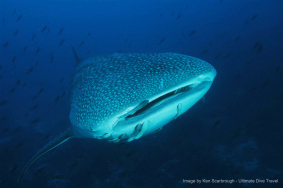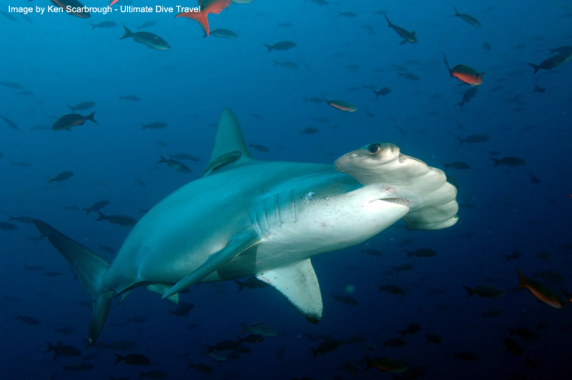Three Challenging Scuba Diving Destinations
From many diving destinations around the world, some destinations are considered challenging and could turn to dangerous dives if safety measures were not taken. The diving destinations here are destinations where the sea currents are unpredictable below and above the water, frequent changes of the seawater temperature and intimidating marine species. Even experienced scuba divers with high numbers of logged dives should pay attention on safety when diving in their dive sites.
Cocos Island (Costa Rica)
Cocos Island is an uninhabited island located about 550 km (342 miles) off the Pacific coast of Costa Rica, a UNESCO World Heritage site because of its marine diversity. What makes it as a spectacular diving destination is the regular schooling of hundreds Hammerhead sharks that passing on its water. Besides of Hammerhead Sharks, other unique marine species such as Silky Sharks, Marbled Rays, Manta Rays or Rosy-lipped Batfish can be seen on Cocos Island.
Galapagos Islands (Ecuador)
Galapagos is known as one of the most biodiverse areas of the world. Marine Iguana, Galápagos sea lion, penguins, blue-footed boobie, gigantic sea tortoises and many more species are to be seen when visiting the Islands. The Galapagos Marine Iguana, the world’s only marine lizards, and Hammerhead Sharks are the highlights of scuba diving in the Galapagos Islands.
Cold water, strong currents, surges, low visibility, and dangerous downdrafts are typical dive sites in Galapagos Islands. As a scuba diver, you need to be aware of this situation and do dive with diving center or tour with experienced dive guides. Ultimate Dive Travel in Galapagos Islands has several offers that worth to check. Following are images taken by Ken Scarbrough (Ultimate Dive Travel) in Galapagos.
The Komodo Archipelago (Indonesia)
The Komodo Archipelago was certainly the most challenging diving destinations I have ever experienced. A couple who joined us had their logged dive less than 20 dives, and they canceled the rest of the dives after experiencing the strong current on the first dive. The current was too intimidating for them. The islands of Komodo and Rinca form a bottleneck passage between the Indian and Pacific Ocean currents (source). The lack of passage caused many types of currents during the tidal changes from south to north or vice versa, and that include the whirlpool current.
Due to this unique position, the sea around the archipelago attracts huge fishes. Additionally, the corals were healthy, colorful and varied compared to other destinations. Komodo has cleaning station areas where Manta Rays usually hang out with their buddies. Scuba divers can dive as well under an active volcano, Sangeang Api. The dive sites have the black sandy bottom with the bubbles rising from the hot springs. Diving in the Komodo Archipelago is best through liveaboard as most dive sites are remote and take several days of sailing from the mainland. Liveaboard offers on Indonesia scuba diving are available in Ultimate Dive Travel in Indonesia.
These diving destinations are not on budget travels, preparation will bring your diving holiday enjoyable at most. Few tips when you decide to dive in these destinations:
- Do research on the seasons that are more accommodating to your diving skills.
- Choose reputable dive operator with experienced dive guides and having great attention to the safety of the clients. Ultimate Dive Travel is a reputable diving travel company in the USA. The owners are experienced scuba divers who are familiar with some of the diving destinations as mentioned.
- Do more scuba diving to bring your confidence.
- Make sure you are physically fit when about to join the diving trip.
- Respect the power of the ocean and its residents by following the safety protocols from the dive guides.
You may wonder why some scuba divers like myself still wanting to visit such destinations. They sound dangerous, unpleasant and intimidating, especially to dive with the sharks. For me, these destinations are not just brought adrenaline rush but also supporting the idea that the wildlife is better seen alive than death.
Dive, Travel & Photography http://indahs.com/

